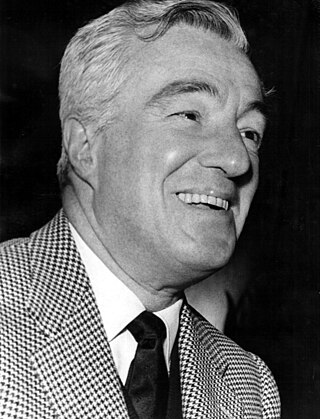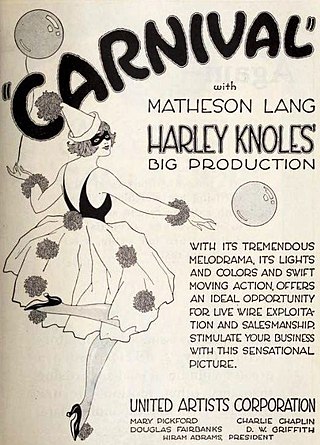
Vittorio De Sica was an Italian film director and actor, a leading figure in the neorealist movement.

Ivor Novello was a Welsh actor, dramatist, singer and composer who became one of the most popular British entertainers of the first half of the 20th century.

The Constant Nymph is a 1924 novel by Margaret Kennedy. It tells how a teenage girl, Tessa Sanger, falls in love with a family friend, who eventually marries her cousin. It explores the protagonists' complex family histories, focusing on class, education and creativity.

Jeremy Philip Northam is an English actor. His film credits include Emma (1996), An Ideal Husband (1999), Gosford Park, The Winslow Boy (1999) and Enigma (2001). In television, he also played Thomas More in the Showtime series The Tudors (2007–2008) and appeared as Anthony Eden in the Netflix series The Crown (2016–2017).

Betty Balfour was an English screen actress, popular during the silent era, and known as the "British Mary Pickford" and "Britain's Queen of Happiness". She was best known to audiences for her Squibs series of films.

Miles Mander, was an English character actor, writer, director and producer in the post-war period of early British cinema during the 1920s to mid-1930s, as well as a playwright and novelist.
Maurice Elvey was one of the most prolific film directors in British history. He directed nearly 200 films between 1913 and 1957. During the silent film era he directed as many as twenty films per year. He also produced more than fifty films – his own as well as films directed by others.

Nina Kind Hakim Provatoroff, known by her stage name of Nina Vanna, was a Russian-born British film actress who appeared in a number of silent films during the 1920s.

Olga Engl was an Austrian-German stage and motion picture actress who appeared in nearly 200 films.
Bonnie Prince Charlie is a 1923 British silent historical film directed by Charles Calvert and starring Ivor Novello, Gladys Cooper, and Hugh Miller. It is now considered a lost film.

The Constant Nymph is a 1928 British silent film drama, directed by Adrian Brunel and starring Ivor Novello and Mabel Poulton. This was the first film adaptation of the 1924 best-selling and controversial novel The Constant Nymph by Margaret Kennedy and the 1926 stage play version written by Kennedy and Basil Dean. The theme of adolescent sexuality reportedly discomfited the British film censors, until they were reassured that lead actress Poulton was in fact in her 20s.

Adrian Brunel was an English film director and screenwriter. Brunel's directorial career started in the silent era, and reached its peak in the latter half of the 1920s. His surviving work from the 1920s, both full-length feature films and shorts, is highly regarded by silent film historians for its distinctive innovation, sophistication and wit.

Blighty is a 1927 British World War I silent drama film directed by Adrian Brunel and starring Ellaline Terriss, Lillian Hall-Davis and Jameson Thomas. The film was a Gainsborough Pictures production with screenplay by Eliot Stannard from a story by Ivor Montagu.

The Triumph of the Rat is a 1926 British silent film drama, directed by Graham Cutts for Gainsborough Pictures and starring Ivor Novello, Isabel Jeans and Nina Vanna.
The Return of the Rat is a 1929 British sound drama film directed by Graham Cutts and starring Ivor Novello, Isabel Jeans and Mabel Poulton. While the film has no audible dialog, it was released with a synchronized musical score with sound effects. It was made by Gainsborough Pictures at their Islington Studios. It was also released in a silent version for cinemas not wired for sound.

The White Rose is a 1923 American silent drama film directed by D. W. Griffith. The film was written, produced, and directed by Griffith, and stars Mae Marsh, Ivor Novello, Carol Dempster, and Neil Hamilton. Though this film is extant, it is one of Griffith's rarely seen films.

The Bohemian Girl is a 1922 British romance film directed by Harley Knoles and starring Gladys Cooper, Ivor Novello, and C. Aubrey Smith. It was inspired by the opera The Bohemian Girl by Michael William Balfe and Alfred Bunn, which was in turn based on a novel La Gitanilla by Miguel de Cervantes. Originally released at 70 minutes, the surviving print is missing the first two reels and small portion of the last, timing at 46 minutes.

Carnival is a 1921 British silent drama film directed by Harley Knoles and starring Matheson Lang, Ivor Novello and Hilda Bayley. During a production of William Shakespeare's Othello in Venice, an Italian actor suspects his wife of having an affair and plans to murder her on stage. It was based on a stage play of the year before, of which Matheson Lang was one of the writers. The film was a popular success, and was re-released the following year. In 1931, it was remade as a sound film, Carnival, directed by Herbert Wilcox.
Isabella Fieschi, was a lady of Milan by marriage to Luchino Visconti, lord of Milan.
Miarka or Miarka: The Daughter of the Bear is a 1920 French silent drama film directed by Louis Mercanton and starring Ivor Novello. The film is also known by the alternative title of Gypsy Passion. It was shot on location in the Camargue region. It was based on a novel by Jean Richepin which had previously been made into the libretto for an opera, Miarka, was later turned into a sound film of the same name.
















